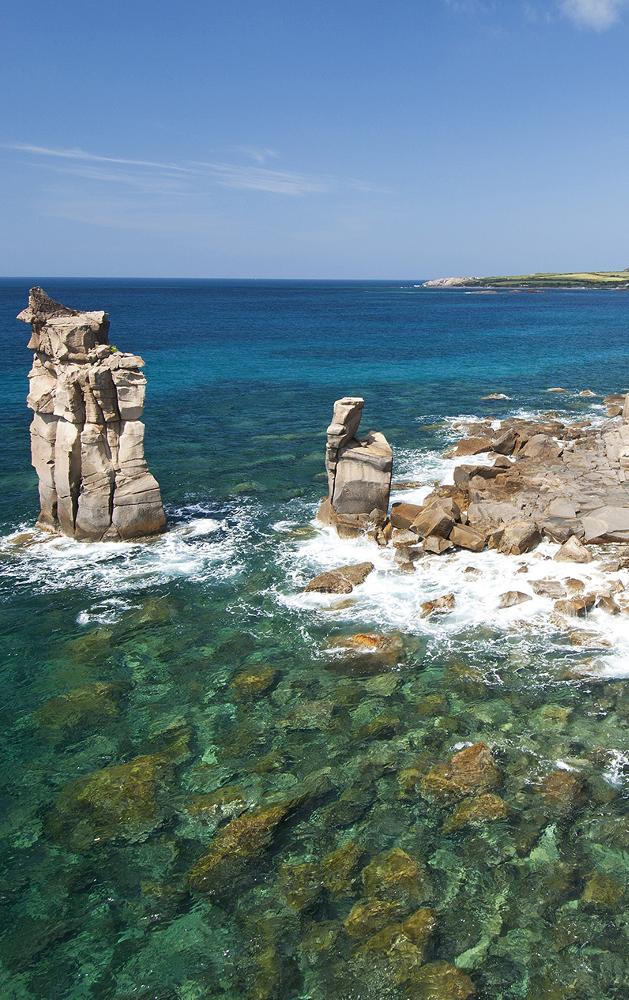San Pietro Island by Boat
From Portoscuso or Sant'Antioco you will board the boat that will bring you on a day tour visiting all the little bays, beaches and caves of San Pietro Island.
Highlights of the Tour
**The itinerary depends on the weather conditions**
- The little harbour of Carloforte: This is approximately 7 kilometres (4 miles) from the mainland.
- Ancient tonnara: The Island has an ancient tradition of tuna fishing and tuna processing. This tradition has been passed down from generation to generation, up to the present day, for one of the most important and prestigious products of the Mediterranean.
- Island of Calavinagra: Calavinagra is a deep bay that enters the wildest part of San Pietro Island, the one that is not easily accessible from land. The islet of Calavinagra protects the entrance to this cove, making its waters protected from the strong Mistral wind.
- Beach of Calafico: The limestone cliffs submerge into the turquoise sea in this beautiful bay to the north of Capo Sandalo. The small gulf ends in a pretty, virgin pebble beach. A boat is definitely the best way to access this pearl of the island.
- Caletta beach: One of the most popular beaches on the island, from the boat you can fully appreciate all its beauty and crystal-clear waters that are the envy of the beaches in the Maldives.
- Le Colonne (sea stacks): The natural monument of Isola Di San Pietro, and a symbol of the locality. It is truly fascinating and surrounded by an intense blue sea and the beach of the homonymous name.
- Spiaggia del Giunco: This uncontaminated beach is located in the Saline area. Its shallow, turquoise waters are bordered by rocks smoothed by the sea and the wind. Sightings of flamingos are frequent here.
A Bit of History
The approximately 6,000 inhabitants of the island are mostly concentrated in the fishing town of Carloforte, the only municipality on the island. The island is named after St Peter who, legend says was marooned here during a storm on the way to Karalis (now Cagliari). The Romans had previously called it Accipitrum after the falcons that nest here.
It was settled in 1736 by a group of Ligurian coral fishers and in 1798 was raided by North African pirates, escaping with 1000 prisoners. These eventually returned to the island after the Genoese Savoys paid a ransom for them. Today islanders still speak Tabarkino, a 16th-century version of Genoese.
 ?
?
To book, click below or contact NxtStop Sardinia


